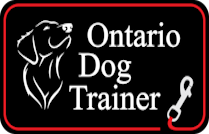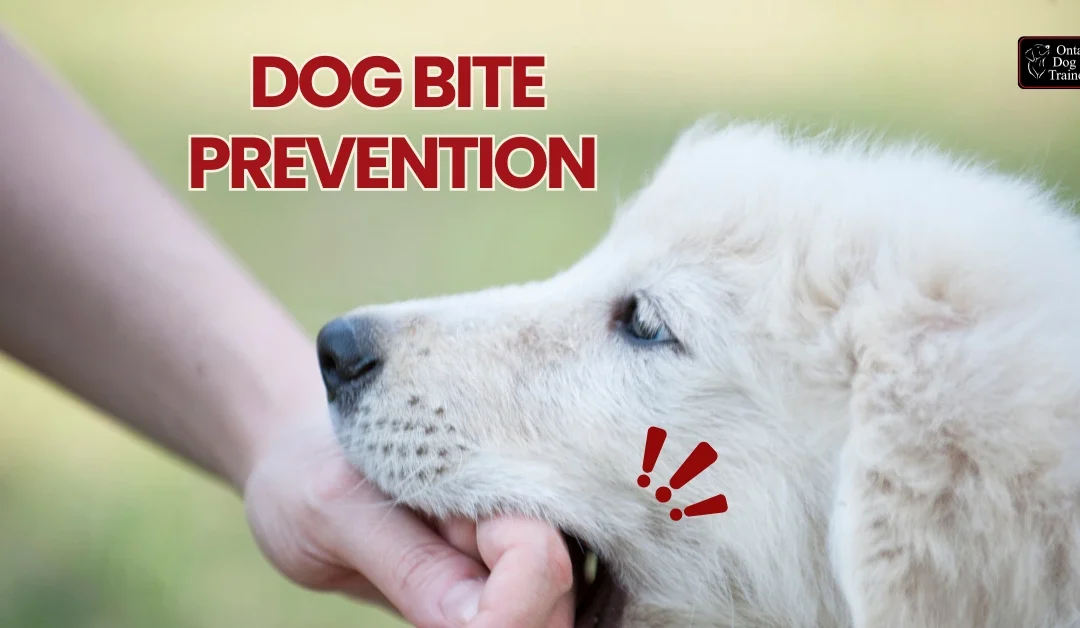How well do you really know the dog in front of you?
That’s not a trick question. Whether it’s your own dog, your neighbour’s doodle, or a friendly-looking pup at the park—if you assume a dog will tolerate your approach just because it hasn’t bitten yet, you’re rolling the dice. Every year, thousands of people—many of them kids—are bitten by dogs. And here’s the part that gets my hackles up: most of those bites were preventable.
So let’s stop sugar-coating this. Dogs don’t bite “out of nowhere.” There’s always a reason. But if you don’t know what to look for—or worse, if you ignore what the dog is trying to tell you—you’re setting yourself (or your kid) up for a nasty wake-up call.
In this blog, we’ll cover real-world dog bite prevention techniques that work. Not fluff. Not “my dog would never.” Just practical, straight-up advice that might save someone’s skin—literally.
The Hard Truth About Dog Bites
Let’s start with some sobering facts.
- Humane Society of Canada statistics estimate that a dog bite occurs in Canada every 60 seconds
- Many of those bites are to children.
- Most of those bites are completely preventable.
You’ve probably seen the headlines, or heard the horror stories – “child hospitalized after being bitten in a city dog park”. Or a young boy mauled or killed by two large-breed family pet dogs. These aren’t just news items. They’re wake-up calls.
We need to stop treating dog bites like freak accidents. They’re not. They’re behavioral responses to discomfort, pain, or fear. And if we paid more attention, we could stop a lot of them before they start.
Why Dogs Bite (Spoiler: It’s Not “Unprovoked”)
Let’s clear something up. A dog bite is never random.
Dogs bite because:
- They feel threatened.
- They are in pain..
- They are startled.
- They’re trying to protect something (food, toys, a person).
- They’ve been or feel cornered or overwhelmed.
Even the most “well-behaved” dog has limits. Push past those limits—intentionally or not—and you’ll get a response. Sometimes that response is a growl. Sometimes it’s a bite.
Dogs live in survival mode. Their first concern isn’t whether your toddler or best friend likes them. It’s whether they’re safe. If a dog perceives a threat and doesn’t feel it can escape, it will defend itself.
That’s not aggression. That’s instinct.
Three Steps to Prevent a Dog Bite Before It Happens
I teach this to every client, and I’m sharing it here because it works.
Here’s the three-step system I call Stop, Observe, and Signal:
1. Stop and Assess the Situation
See a dog? Stop.
Don’t wave. Don’t shriek “puppyyyyy!” and charge in. Just stop moving. This gives the dog a chance to assess you—and tells it you are or are not a threat.
2. Observe the dog
Observe the dog’s body language to see relaxed ears, mouth, and muscles.
When the dog appears to be relaxed, let the dog choose. No sudden movements or high-pitched voices. Let the dog make the first move.
3. Signal – Only when you observe the dog is calm and appears willing to approach
Use a gentle, non-threatening signal, like patting your leg or offering your hand calmly at your side, to encourage the dog to move toward you. — If the dog doesn’t approach, that’s your answer. Respect it.
If the dog leans in or sits quietly near you, pat its shoulder or side—not its head. Never reach over the top of a dog’s head, especially one you don’t know. That’s like a stranger coming up and rubbing your scalp. Weird and uncomfortable.
What NOT to Do Around Dogs (Seriously, Stop Doing These)
I’ve seen well-meaning people do all of these. Every one of them is a recipe for a dog bite.
- ❌ Don’t rush up to a dog, even if it “looks friendly.”
- ❌ Don’t stare into a dog’s eyes. That’s confrontational.
- ❌ Don’t speak in a high-pitched voice while flapping your hands.
- ❌ Don’t reach toward a dog’s face or head.
- ❌ Don’t force a dog to interact if it backs away.
Listen to the Dog: Warnings Matter
Dogs are polite. They warn before they react.
Growling, stiff posture, licking lips, yawning, turning away—those are all signs a dog is uncomfortable. And yet, so many people ignore them.
If a dog growls, it’s not being “bad.” It’s saying:
“I’m uncomfortable. Please back off.”
Punishing a growl only removes the warning. You’re training the dog to go straight to the bite next time. Not ideal.
So, here’s a better plan: thank the dog for the growl. Back up. Give it enough space that it no longer feels threatened, giving both of you the time to rethink what just happened.
Kids and Dogs: A Recipe That Needs Rules
Kids and dogs can be wonderful together—when the adults are actually supervising.
Here’s what kids should be taught:
- Respect the dog’s space.
- Never hug a dog.
- Don’t pull tails, ears, or fur.
- Don’t run or scream around dogs.
- Let the dog walk away if it wants to.
Yes, even toddlers can learn these basics. Start early. Use simple words. Model the desired behaviour.
If your dog is tolerating the toddler crawling all over it, you’re not winning. You’re gambling. And it only takes one bad moment to change everything.
What About Breaking Up Dog Fights?
Ah yes, the “I’ll just grab the dog” moment.
Don’t. Unless you know what you’re doing, that’s how you get bitten.
Here’s what I recommend:
- Be sure your dog is wearing a sturdy collar that won’t come off when under stress.
- In a fight, get behind the dog that’s on top.
- Slip your hand under the collar and twist and lift the collar to interrupt the dog’s grip.
- Avoid reaching between dogs—biting is reflexive in the heat of it.
Grabbing the back legs and “wheelbarrowing” the dog away? Might work with a 40-pounder. Not so much with a 100-pound Rottweiler in full drive.
Spraying with a hose or dumping a pail of water on the fighting dogs? This only works if you have a hose, a bucket and/ or a water source close by.
Respect Is the Best Prevention
Let’s stop pretending that all dogs want to be your friend. Some do. Some don’t. All of them deserve your respect.
Download this guide and stick it on the fridge, hand it out to your kid’s school, or forward it to the cousin who thinks all dogs love him. Let’s spread some common sense before someone ends up in the ER.
👉 Click here to download your free Dog Bite Prevention Guide
Enjoyed this read? For more no-nonsense insights on dog training and behavior, check out my earlier blogs:
- Tick-Borne Diseases in Dogs: What Every Dog Owner Needs to Know
- Teaching Your Reactive Dog to Stay Calm: The Art of Doing Nothing
- How to Approach a Dog Without Causing Chaos
There’s always something new to learn, even if it’s just a different perspective on the everyday challenges we face. Happy reading!
Join my Email List to get frequent updates, free downloadables, and dog training tips! Click here to subscribe.
Get the latest updates when we publish new freebies and guides by signing up. Your dog will thank you, and you’ll be the first to know when new gifts are available!
Let’s stay connected:

